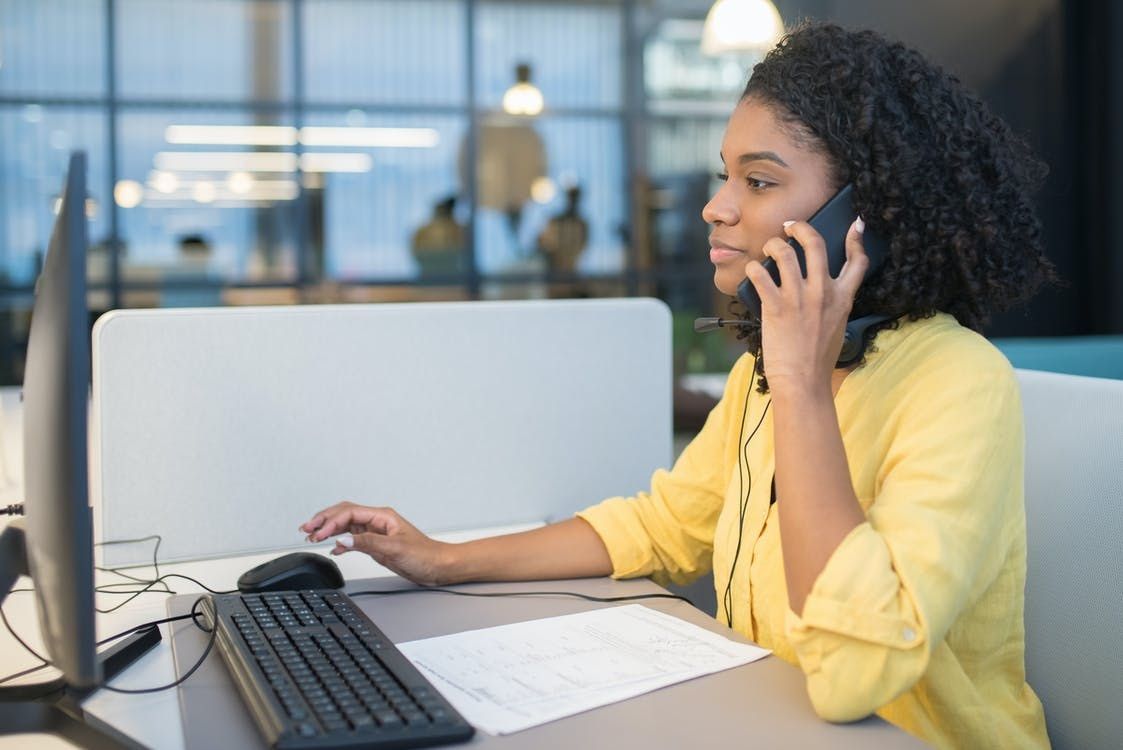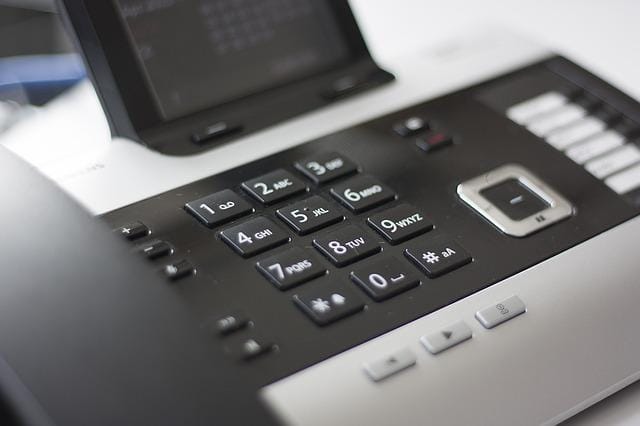All Categories
Featured
Table of Contents
- – Which Is The Best What Is A Phone Answering Ser...
- – What Is The Best Virtual Assistant Call Answer...
- – The Best What Is An Answering Service And Why ...
- – What Is The Best Call Service: 24/7 Live Phon...
- – Which Is Best Virtual Receptionist (Live Phon...
- – Who Is The Best Call Service: 24/7 Live Phon...
Which Is The Best What Is A Phone Answering Service, And How Does It Work?
This device and its followers were designed by Sava Jacobson, an electrical engineer with a private consulting business. While early answering machines utilized magnetic tape innovation, many contemporary equipment uses solid state memory storage; some devices utilize a combination of both, with a solid-state circuit for the outbound message and a cassette for the incoming messages.
"toll saving" below) (business answering service). This works if the owner is evaluating calls and does not wish to speak with all callers. In any case after going, the calling celebration needs to be notified about the call having actually been addressed (in a lot of cases this begins the charging), either by some remark of the operator, or by some welcoming message of the TAD, or addressed to non-human callers (e.
This holds specifically for the Little bits with digitally saved greeting messages or for earlier makers (before the increase of microcassettes) with a special endless loop tape, different from a second cassette, dedicated to recording. There have actually been answer-only devices without any recording abilities, where the greeting message needed to inform callers of a state of present unattainability, or e (answering service).
What Is The Best Virtual Assistant Call Answering Service To Get Right Now

about availability hours. In tape-recording TADs the greeting generally includes an invitation to leave a message "after the beep". An answering maker that utilizes a microcassette to tape messages On a dual-cassette answerphone, there is an outbound cassette, which after the specified variety of rings plays a pre-recorded message to the caller.

Single-cassette answering machines consist of the outbound message at the start of the tape and incoming messages on the staying space. They initially play the announcement, then fast-forward to the next readily available area for recording, then tape the caller's message. If there are lots of previous messages, fast-forwarding through them can cause a considerable hold-up.
This beep is typically referred to in the greeting message, requesting that the caller leave a message "after the beep". Little bits with digital storage for the recorded messages do disappoint this hold-up, of course. A TAD may use a remote control center, whereby the answerphone owner can call the home number and, by entering a code on the remote telephone's keypad, can listen to recorded messages, or erase them, even when away from home.
The Best What Is An Answering Service And Why Use One? To Get

Thus the machine increases the variety of rings after which it responds to the call (typically by 2, resulting in 4 rings), if no unread messages are presently kept, but answers after the set number of rings (generally two) if there are unread messages. This permits the owner to learn whether there are messages waiting; if there are none, the owner can hang up the phone on the, e.
Some devices also allow themselves to be remotely triggered, if they have been turned off, by calling and letting the phone ring a particular big number of times (usually 10-15). Some company desert calls currently after a smaller variety of rings, making remote activation impossible. In the early days of Littles a special transmitter for DTMF tones (dual-tone multi-frequency signalling) was regionally required for remote control, given that the formerly utilized pulse dialling is not apt to convey suitable signalling along an active connection, and the dual-tone multi-frequency signalling was carried out stepwise.
Any incoming call is not identifiable with respect to these residential or commercial properties in advance of going "off hook" by the terminal devices. So after going off hook the calls must be changed to proper gadgets and just the voice-type is right away accessible to a human, but possibly, nonetheless need to be routed to a LITTLE (e.
What Is The Best Call Service: 24/7 Live Phone Answering Services For Small ... Company?
What if I informed you that you do not need to in fact get your gadget when responding to a consumer call? Another person will. So hassle-free, best? Addressing call does not require somebody to be on the other end of the line. Effective automated phone systems can do the trick simply as effectively as a live representative and in some cases even much better.
An automatic answering service or interactive voice response system is a phone system that communicates with callers without a live person on the line - answer phone service. When companies use this technology, consumers can get the response to a concern about your organization merely by utilizing interactions established on a pre-programmed call circulation.
Although live operators update the client service experience, lots of calls do not require human interaction. A basic recorded message or instructions on how a consumer can recover a piece of details normally resolves a caller's immediate need - business call answering service. Automated answering services are an easy and efficient method to direct inbound calls to the right person.
Which Is Best Virtual Receptionist (Live Phone Answering Service) Lg Or Whirlpool
Notice that when you call a company, either for support or item inquiry, the first thing you will hear is a pre-recorded voice greeting and a series of choices like press 1 for client service, press 2 for inquiries, and so on. The pre-recorded choices branch out to other choices depending upon the client's selection.
The phone tree system assists direct callers to the right person or department utilizing the keypad on a smart phone. In some instances, callers can use their voices. It's worth noting that auto-attendant options aren't restricted to the ten numbers on a phone's keypad. Once the caller has actually picked their first choice, you can create a multi-level auto-attendant that uses sub-menus to direct the caller to the ideal type of assistance.
The caller does not have to communicate with an individual if the auto-attendant phone system can handle their concern. The automated service can path callers to a staff member if they reach a "dead end" and need help from a live representative. It is pricey to hire an operator or executive assistant.
Who Is The Best Call Service: 24/7 Live Phone Answering Services For Small ... Company?
Automated answering services, on the other hand, are substantially cheaper and supply significant cost savings at an average of $200-$420/month. Even if you do not have actually devoted personnel to handle call routing and management, an automated answering service improves efficiency by permitting your team to focus on their strengths so they can more efficiently spend their time on the phone.
A sales lead routed to customer care is a lost shot. If a customer who has item concerns reaches the wrong department or gets incomplete responses from well-meaning workers who are less trained to deal with a particular kind of concern, it can be a cause of frustration and dissatisfaction. An automatic answering system can reduce the variety of misrouted calls, thus assisting your workers make much better use of their phone time while maximizing time in their calendar for other tasks.
With Automated Answering Systems, you can develop an individualized experience for both your personnel and your callers. Make a recording of your primary welcoming, and just upgrade it frequently to reflect what is going on in your organization. You can create as numerous departments or menu options as you want.
Table of Contents
- – Which Is The Best What Is A Phone Answering Ser...
- – What Is The Best Virtual Assistant Call Answer...
- – The Best What Is An Answering Service And Why ...
- – What Is The Best Call Service: 24/7 Live Phon...
- – Which Is Best Virtual Receptionist (Live Phon...
- – Who Is The Best Call Service: 24/7 Live Phon...
Latest Posts
Ai Answering System
Guaranteed Hospitality Answering Service (Surfers Paradise)
Comprehensive Virtual Phone Answering Near Me – Adelaide
More
Latest Posts
Ai Answering System
Guaranteed Hospitality Answering Service (Surfers Paradise)
Comprehensive Virtual Phone Answering Near Me – Adelaide